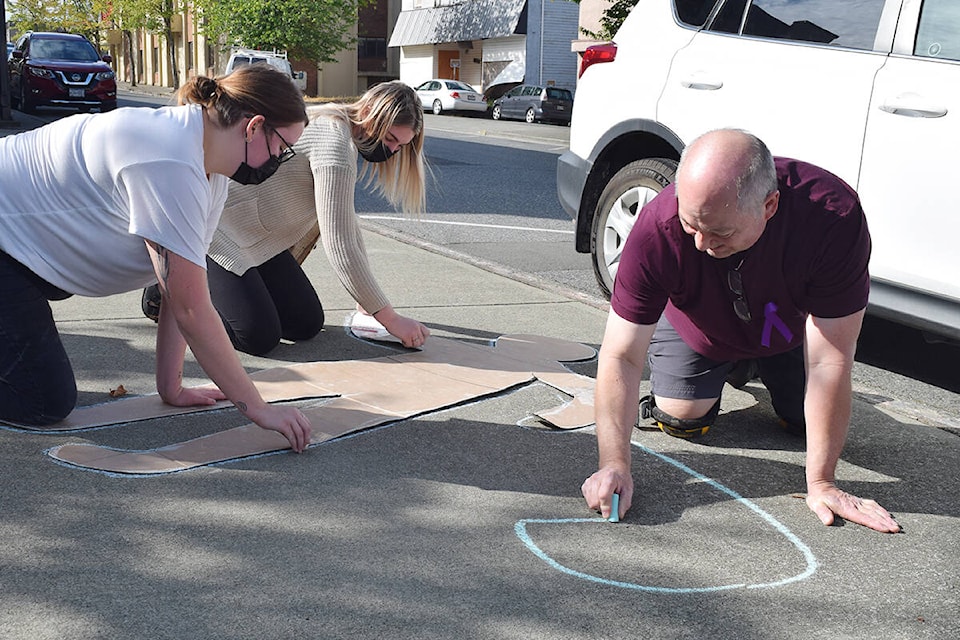The number of drug toxicity deaths in the Alberni-Clayoquot region nearly doubled in 2021, according to data from the BC Coroner’s Service.
A report from the BC Coroner’s Service released on Feb. 9 says that there were 120 illicit drug toxicity deaths on Central Vancouver Island in 2021. That’s an increase from 101 in 2020, and the highest number in the past 10 years.
In the Alberni-Clayoquot region alone, there were 21 deaths in 2021. This is nearly double the 11 deaths recorded in the region in 2020.
An estimated 2,224 British Columbians died from toxic drug poisonings in 2021, marking the worst year in the province’s history in the ongoing overdose crisis. That’s an average of six deaths per day.
A majority of the deaths (83 per cent) occurred indoors, and 71 per cent of those dying were aged 30 to 59 and predominately men.
No deaths were reported at supervised consumption or overdose prevention sites.
Port Alberni Community Action Team co-chair Ron Merk attributes part of the increase in overdoses to the COVID-19 pandemic.
In addition to the social problems that COVID-19 has presented—isolation, a lack of access to services—the pandemic has also dried up illicit drug sources that rely on easy border access. This resulted in more toxic drugs in the distribution chain.
COVID-19 has also had a more “insidious” effect on the overdose crisis, in that it has taken focus away from the crisis, said Merk.
“The biggest single obstacle we have to face is inaction,” said Merk. “We need action from the higher levels of government and we need it right now.”
Merk said he wants to see a safe drug supply and decriminalization. And Merk isn’t the only one calling for these changes. Courtenay-Alberni MP Gord Johns introduced a private member’s bill earlier this month that was seconded by North Island-Powell River MP Rachel Blaney that would decriminalize drug possession for personal use and expand access to harm reduction, treatment and recovery programs and services.
“We need to decriminalize immediately and save lives by providing access to a regulated safer supply of drugs for users,” Johns said. “Besides these necessary steps, this bill would also require the government to remove barriers to employment, housing and travel for thousands of Canadians by expunging their criminal records for simple possession of drugs. This shouldn’t be a partisan issue.”
Although some have argued that a government-regulated drug supply is “enabling addiction,” Merk says that the overall solution to substance use disorders isn’t as simple as rehabilitation.
“We have to address the larger social problems so people feel safe enough to heal,” he said. “Trauma is the underlying trigger that drives most substance use disorders. You have to address the underlying root problem that drove the person to start using substances in the first place. If this was a simple solution, we would have fixed this years ago.”
Port Alberni’s CAT was formed shortly after B.C. declared a public health emergency around the overdose crisis back in 2016. The team’s goal is to spearhead coordination and communication to respond to the needs of those most at risk of overdoses in their community.
The CAT meets monthly, bringing together 20-40 stakeholders representing all parts of the community—from government officials to RCMP to First Nations to people with lived experience.
“It’s such a diverse group—we’re bringing together people that wouldn’t normally be talking to each other,” said Merk.
The team has been acting as a lobbying body, sending letters to all levels of government. The CAT most recently sent a letter to city council last month, asking for the city to provide and service public washrooms.
READ MORE: Groups call on city of Port Alberni to answer public washroom need
The CAT also runs an anti-stigma campaign and is involved in harm reduction, distributing everything from naloxone to blankets and ponchos to the city’s homeless population.
“It becomes frustrating because you wonder if any of the work we’re doing is helping,” said Merk. “But if we weren’t helping, the numbers might be double what they are.
Over the next year, the CAT will be working with its partners to build a peer empowerment and employment network. The CAT will continue its work over the next year guided by four main pillars: harm reduction, stigma reduction, networking and communications and social stablilization.
— with files from Ashley Wadhwani, Black Press
elena.rardon@albernivalleynews.com
Like us on Facebook and follow us on Twitter
